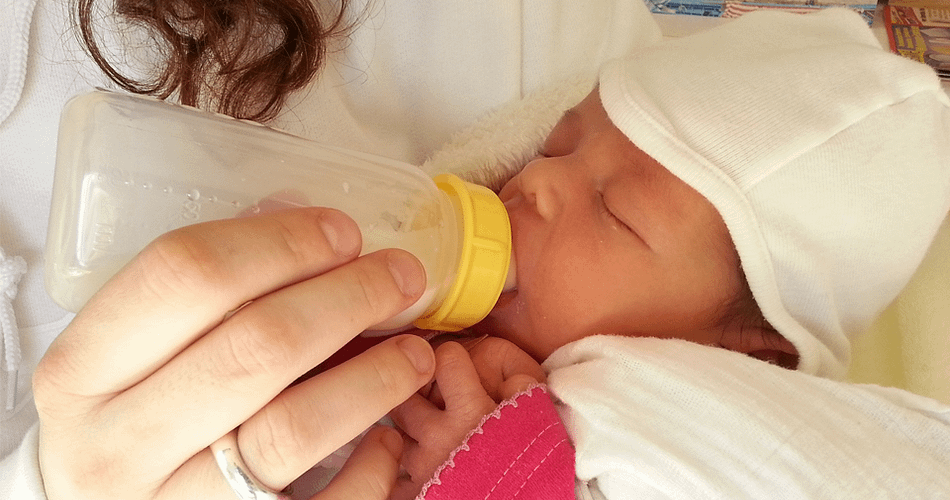As you work to provide safe and healthy early learning environments for young children, including infants and toddlers, you may find yourself wondering how to adapt for the youngest children in your care. Certain COVID safety recommendations may not apply to infants and toddlers due to their stage of development, but there are still plenty of precautions that you can make to protect yourself and your littlest learners in today’s environment.
Read on for ways to support the healthy development of the infants and toddlers in your care while reducing the spread of germs:
Infants and Toddlers Still Need Closeness and Touch
Infants have a profound need for physical closeness and touch. Responding to an infant’s cues, through talking, eye contact and physical touch, supports healthy development for the brain and body. This is one reason why holding an infant for bottle feeding is critical—even in today’s environment of COVID-19.
Toddlers are becoming more mobile and independent but still rely on physical closeness and touch from a trusted caregiver, especially in stressful situations. When a toddler is hurt, scared or anxious, the physical closeness and touch of a caregiver provides reassurance, supporting their confidence and healthy development.
The Arizona Quality First Recommendations for Safe Child Care Operations During COVID-19 guide provides recommendations for protecting yourself and the youngest learners in your care while providing physical closeness and touch. (The recommendations may be found on page 15 of the guide.)
- Child care providers wash their hands, neck and anywhere touched by a child’s secretions.
- Child care providers have gowns, smocks or button down shirts that can be changed if there are secretions on it. These items are washed at the warmest temperature recommended on the label and dried thoroughly daily. Multiple changes throughout the day may be needed.
- Child care providers change the child’s clothes if secretions are on the child’s clothes.
- Contaminated clothes are placed in a plastic bag or washed in a washing machine.
- Multiple changes of clothes are available for infants and toddlers.
Infants and Toddlers Explore by Mouthing
Infants and toddlers learn by observing, exploring, touching and mouthing the objects in their environment. Developmentally, we expect children at this stage to put things in their mouths, but in a group care setting, this creates a challenge when trying to limit the spread of germs.
The Arizona Quality First Recommendations for Safe Child Care Operations During COVID-19 guide recommends the following steps for dealing with mouthed objects. (These recommendations may be found on page 11 of the guide.)
- Any mouthed toys or items should be cleaned with soap and water, rinsed with water, sanitized, rinsed with water
and air dried OR washed in a dishwasher before being used by another child.
Be prepared by having a bin for mouthed toys ready, and watching for instances of mouthing. Once a child has finished mouthing an item, quickly remove it before it can be shared. Keep an extra supply of clean toys handy so you can replace the toys you have removed to be cleaned and sanitized.
Precautions Help Reduce the Spread of Germs During Diapering
The diapering routine provides a regular opportunity for one-on-one interaction, conversation and closeness between a child and caregiver. With the right precautions, caregivers can reduce the potential spread of germs that can result from diapering in the group care setting. The Arizona Quality First Recommendations for Safe Child Care Operations During COVID-19 guide provides recommendations for diapering procedures to reduce the spread of germs. (The recommendations may be found on page 15 of the guide.)
Note: Arizona does not require nor promote the use of nonabsorbent paper liner to cover the changing surface.
Your Mask Protects You and the Child
Children under the age of 2 should never wear cloth face coverings, due to the risk of suffocation. However, you can still protect yourself and the children in your care by wearing your own cloth face covering. See page 9 of the Arizona Quality First Recommendations for Safe Child Care Operations During COVID-19 guide for more information about using masks.
Since infants and toddlers are learning to read their caregiver’s facial expressions, keep in mind how to compensate when your face is partially covered with a mask. Focus on expressing emotions through your eyes, body language and tone of voice. “Smiling with your eyes,” moving your eyebrows when you speak, and varying your tone of voice provide additional nonverbal cues to the infants and toddlers in your care.
Resources
Huffington Post: A Parent’s Touch Actually Transforms A Baby’s Brain
Caring for our Children: Selecting an Appropriate Sanitizer or Disinfectant
Caring for our Children: Diapering and Changing Soiled Clothing
Zero to Three: Talking to Children about Masks
At Quality First, we love to hear from you! Share your new and innovative practices so others can be inspired. Send an email to QualityFirst@FirstThingsFirst.org.
